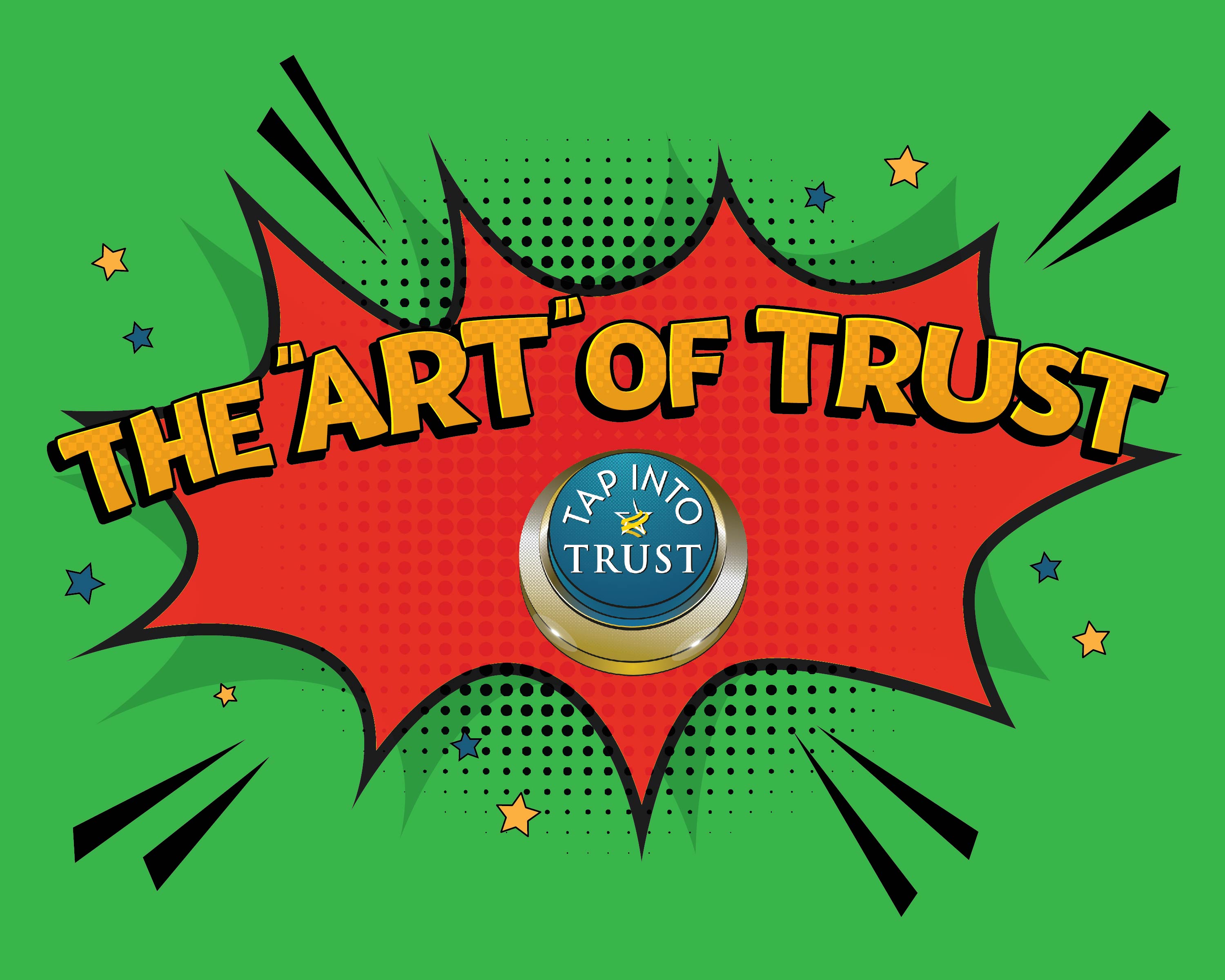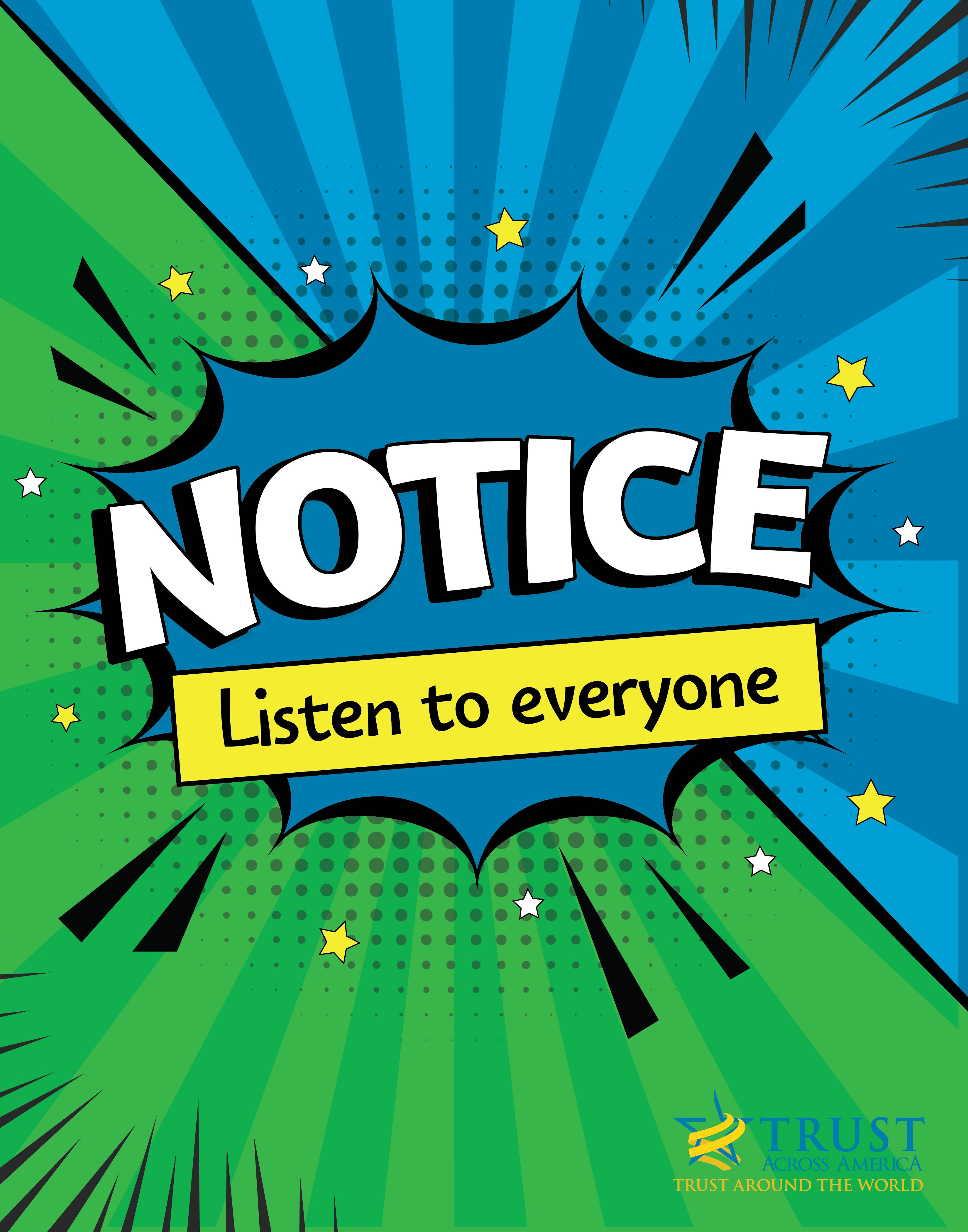Do you listen to me?
Do you care what I have to say?
To date, over 32% of 600+ survey respondents say “Notice” is lacking in their workplace.
Notice is the fifth of *12 behaviors in our Tap Into Trust (TAP) framework having now been accessed over 150,000 times in 16 languages.
Trust Across America-Trust Around the World created The “Art” of Trust visual “cues” to start a discussion about workplace behaviors that build and weaken stakeholder trust. Together these cues form a “Wall” of Trust to enhance learning and retention.
In building team and stakeholder trust, we define “Notice” as follows:
We seek out and listen to diverse perspectives – every voice can matter.
Our Trust Alliance members suggest the following discussion questions to elevate notice and build workplace trust.
- What are concrete examples of ways to acknowledge and appropriately honor opposing opinions?
- How can we include all people in feedback rather than having some people feel forgotten?
The “Art” of Trust is one of many resources designed for our Trust Action Project to help leaders, teams and organizations move from trust talk to ACTION in 2021 and beyond.
Would you like to build a Wall of Trust for your team? Take the first step.

Join our global Trust Alliance and participate in our programs.
Learn more about the Trust Action Project 2021 at this link.
*TAP INTO TRUST is an acronym. The 12 behaviors are equally weighted. The weakest behaviors break the trust chain.
Copyright 2021, Next Decade, Inc.



I had a client who used to assign a role in general meetings. The role was to bring up all of the negatives or opposing viewpoints in the discussion. It did two things, the person who was the cheerleader was tasked to see what wouldn’t work and broaden their perspectives. The person who brought up negatives all of the time was asked to allow the other person to do their role and come up with the positives also expanding their perspectives. It took deep listening and opening up to another viewpoint.